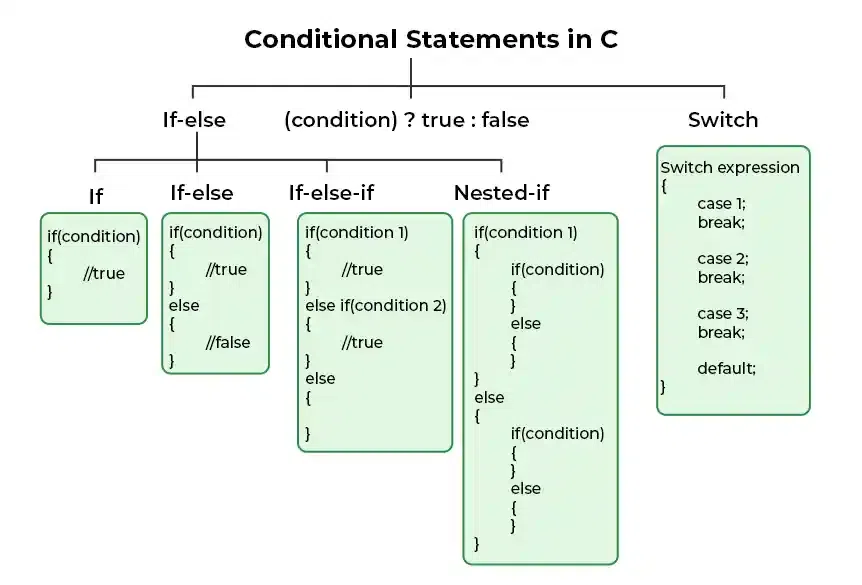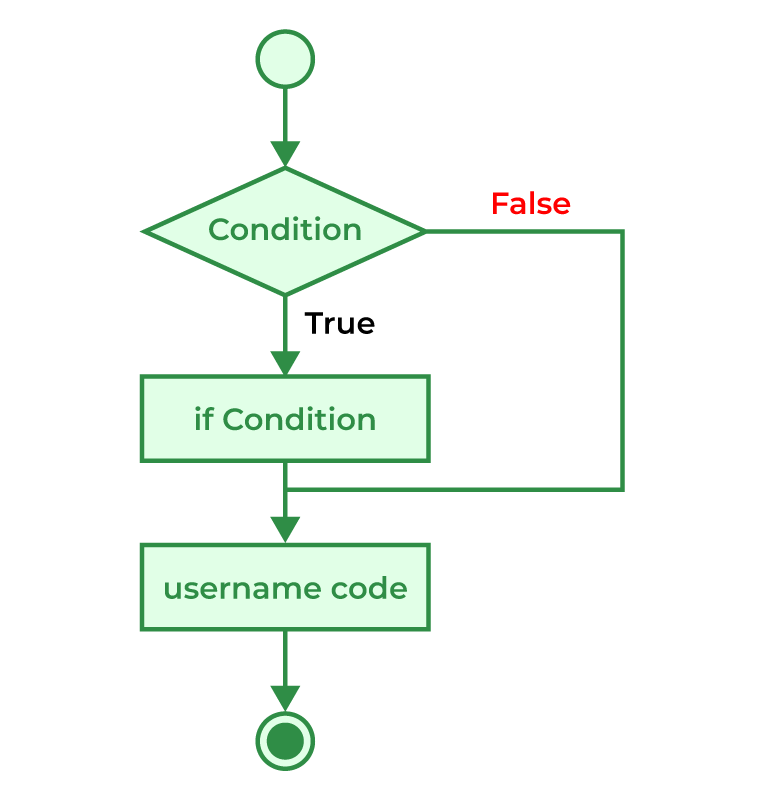
The conditional statements (also known as decision control structures) such as if, if else, switch, etc. are used for decision-making purposes in C programs.
They are also known as Decision-Making Statements and are used to evaluate one or more conditions and make the decision whether to execute a set of statements or not. These decision-making statements in programming languages decide the direction of the flow of program execution.
There come situations in real life when we need to make some decisions and based on these decisions, we decide what should we do next. Similar situations arise in programming also where we need to make some decisions and based on these decisions we will execute the next block of code. For example, in C if x occurs then execute y else execute z. There can also be multiple conditions like in C if x occurs then execute p, else if condition y occurs execute q, else execute r. This condition of C else-if is one of the many ways of importing multiple conditions.

Following are the decision-making statements available in C:
Let’s discuss each of them one by one.
The if statement is the most simple decision-making statement. It is used to decide whether a certain statement or block of statements will be executed or not i.e if a certain condition is true then a block of statements is executed otherwise not.
if(condition) // Statements to execute if // condition is true >
Here, the condition after evaluation will be either true or false. C if statement accepts boolean values – if the value is true then it will execute the block of statements below it otherwise not. If we do not provide the curly braces ‘’ after if(condition) then by default if statement will consider the first immediately below statement to be inside its block.

Flow Diagram of if Statement